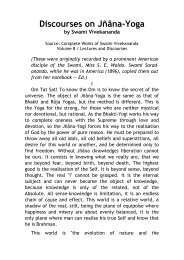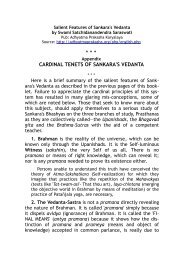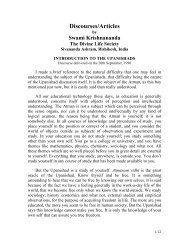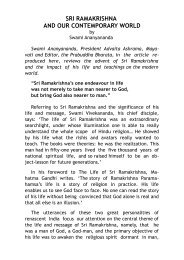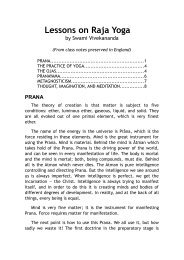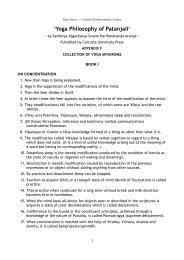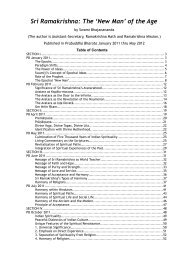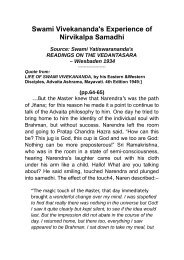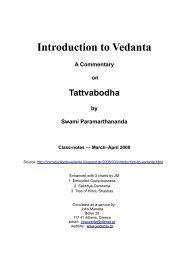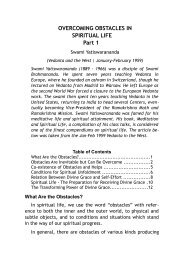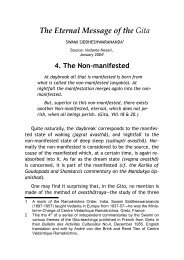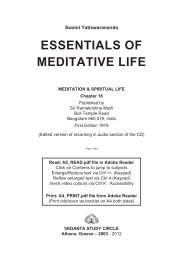Concentration & Meditation - Vedanta
Concentration & Meditation - Vedanta
Concentration & Meditation - Vedanta
Create successful ePaper yourself
Turn your PDF publications into a flip-book with our unique Google optimized e-Paper software.
40 Swami Bhajananandayogi are impelled by the pure will, detached from desires. Whenthe will is directed inward towards the Atman, it becomes meditation.The usual Sanskrit term for will is iccha, but this is also usedto mean desire. The Gita uses a more accurate term for will:dhriti. It classifies dhriti into three types — sattvika, rajasika andtamasika — depending upon the degree of freedom of the will."That will by which the activities of the mind, senses and prana arecontrolled through unflinching Yoga is sattvika. That will by whichDharma, wealth and pleasure are pursued and which demandsimmediate results is rajasika. That will by which the stupid manholds on to sleep, fear, sorrow, depression and lust istamasika." 29Stages in <strong>Concentration</strong>Yogic concentration passes through three stages: dharana,dhyana and samadhi, of which the second stage alone is calledmeditation. All the three stages together are termed samyama.The normal mental life of the average person is dominated bymental automatisms and impulses resulting in the preoccupationwith certain ideas and confused awareness. The main cause forthis is unsteadiness of the will. For clear awareness, the will mustfirst of all be detached from desires and then fixed at a particularcentre of consciousness within. This fixing of the will is calleddharana. This becomes possible only when the centre of consciousnessis developed through purification of the mind, prayer,worship, etc. An easier method of dharana is to fix the mind on anexternal object by gazing at it, steadily. Books on Yoga, Buddhismand occultism teach this kind of concentration on a mandala,a crystal or a point. Progress is quicker by this method but,since this may lead to the development of psychic powers, spiritualaspirants are usually advised to practise inner concentration.The second stage is dhyana or meditation. It should be notedhere that all the so-called meditation techniques are really techniquesof dharana. <strong>Meditation</strong> is not a technique but a stage inconcentration. When by following a particular technique ofdharana a single stream of thought is maintained, it becomes29. Bhagavad Gita 18. 33-35.



